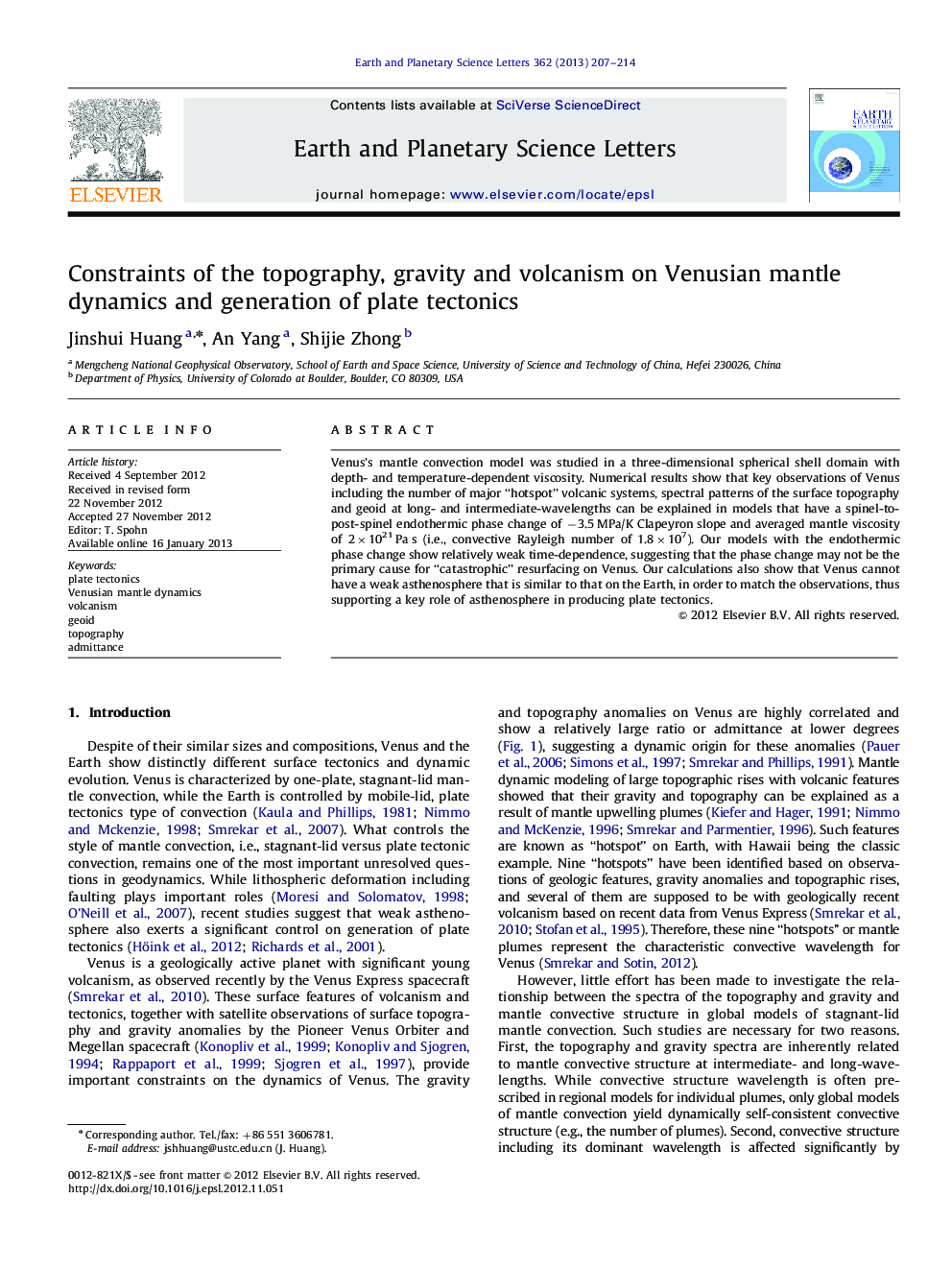| Article ID | Journal | Published Year | Pages | File Type |
|---|---|---|---|---|
| 4677259 | Earth and Planetary Science Letters | 2013 | 8 Pages |
Venus's mantle convection model was studied in a three-dimensional spherical shell domain with depth- and temperature-dependent viscosity. Numerical results show that key observations of Venus including the number of major “hotspot” volcanic systems, spectral patterns of the surface topography and geoid at long- and intermediate-wavelengths can be explained in models that have a spinel-to-post-spinel endothermic phase change of −3.5 MPa/K Clapeyron slope and averaged mantle viscosity of 2×1021 Pa s (i.e., convective Rayleigh number of 1.8×107). Our models with the endothermic phase change show relatively weak time-dependence, suggesting that the phase change may not be the primary cause for “catastrophic” resurfacing on Venus. Our calculations also show that Venus cannot have a weak asthenosphere that is similar to that on the Earth, in order to match the observations, thus supporting a key role of asthenosphere in producing plate tectonics.
► A mantle dynamic model explains Venus' topography and gravity spectra and volcanism. ► Our models show a key role of a spinel-to-post-spinel endothermic phase change. ► Our models reject an Earth-like weak asthenosphere in Venusian mantle. ► Emphasizing important effects of asthenosphere in producing plate tectonics. ► Our models show relatively weak time-dependence and no major mantle overturn.
